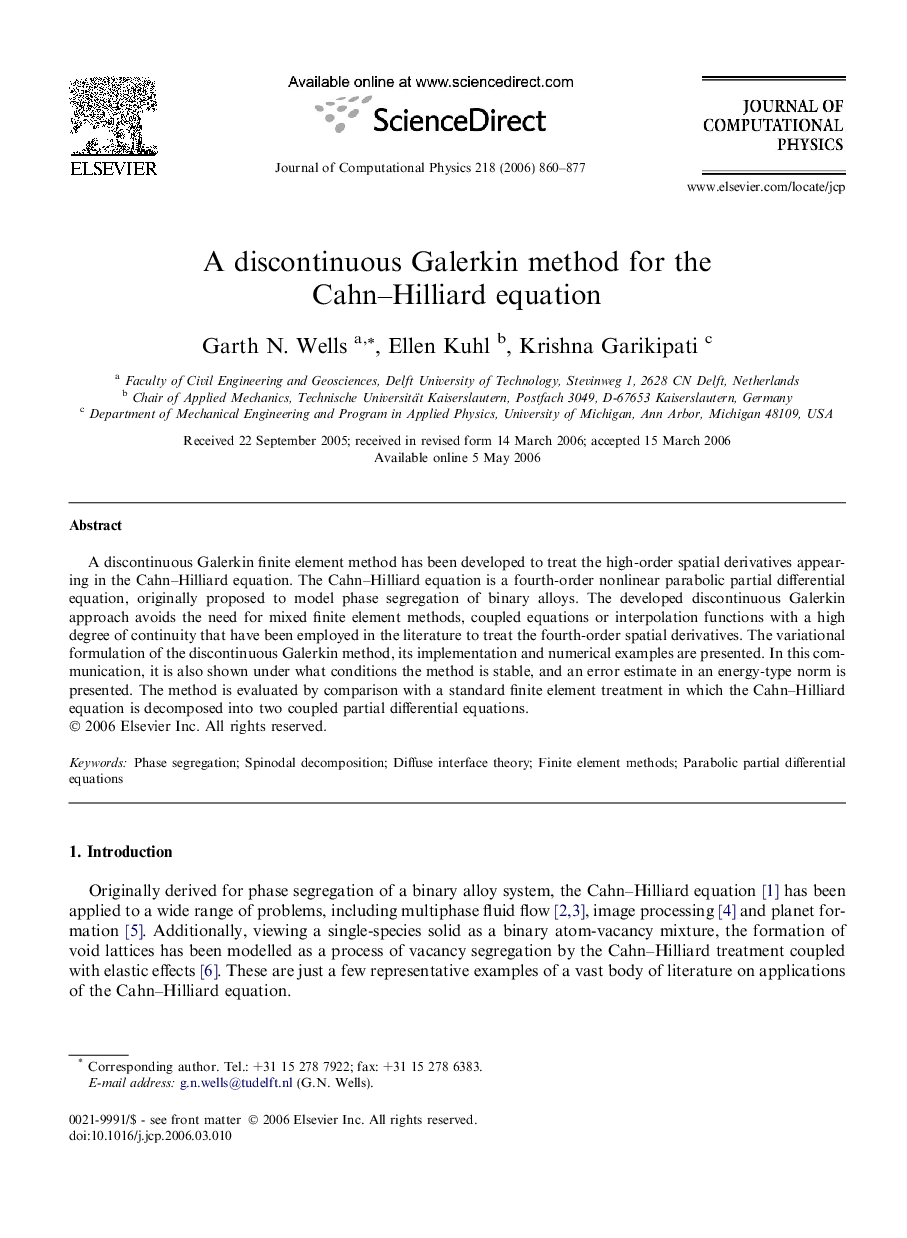| Article ID | Journal | Published Year | Pages | File Type |
|---|---|---|---|---|
| 522731 | Journal of Computational Physics | 2006 | 18 Pages |
A discontinuous Galerkin finite element method has been developed to treat the high-order spatial derivatives appearing in the Cahn–Hilliard equation. The Cahn–Hilliard equation is a fourth-order nonlinear parabolic partial differential equation, originally proposed to model phase segregation of binary alloys. The developed discontinuous Galerkin approach avoids the need for mixed finite element methods, coupled equations or interpolation functions with a high degree of continuity that have been employed in the literature to treat the fourth-order spatial derivatives. The variational formulation of the discontinuous Galerkin method, its implementation and numerical examples are presented. In this communication, it is also shown under what conditions the method is stable, and an error estimate in an energy-type norm is presented. The method is evaluated by comparison with a standard finite element treatment in which the Cahn–Hilliard equation is decomposed into two coupled partial differential equations.
